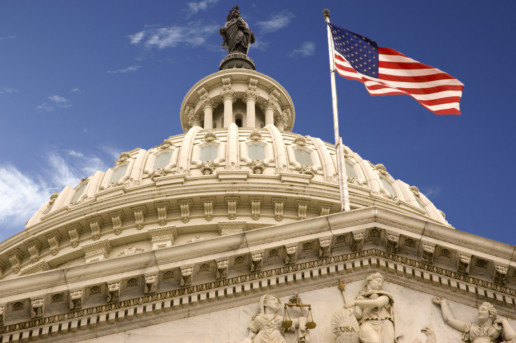What do the DOL’s new AHP rules actually mean?
On June 18, 2018, the Department of Labor released a set of final regulations regarding Association Health Plans. In this article, Beinecke explains what they mean.
President Trump signed an Executive Order on October 12, 2017 directing the U.S. Department of Labor to consider ways to make it easier to form an Association Health Plan by expanding existing membership rules. After issuing proposed regulations in early 2018 and considering public comments, the DOL issued a set of final regulations intended to make it easier to form AHPs on June 18, 2018.
The final regulations do not replace the existing AHP rules. Instead, they create a three-tier AHP system referred to in this article as the:
Narrow Standard AHP: These AHPs are available under the existing rules, but they can be difficult to form.
Relaxed Standard AHP: These AHPs are created by the new regulations. They are easier to form than a Narrow Standard AHP and can allow self-employed individuals to participate, but they do not allow as much flexibility in terms of plan design and underwriting (discussed in the chart below under “Plan Design and Underwriting”).
Non-Conforming AHPs: These are AHPs that do not meet either the Narrow or Relaxed Standards. We’ll touch on these briefly at the end of this article.
What are the Pros and Cons for Narrow and Relaxed Standard AHPs?
Pros:
- The combined membership of the member employers may enable the AHP to self-insure
- Qualify as single employer group health plans for ERISA and other purposes, enabling many fully-insured AHPs to qualify as a large group insured plan based upon the number of covered lives
- Self-insured and large group insured AHPs are able to avoid certain requirements applicable to small group and individual plans under federal and state law, including:
o The requirement to offer all essential health benefits (EHB) mandated by a state’s EHB package (the AHP will still have establish a reasonable definition for EHBs such as selecting a benchmark plan); and
o Community rating requirements. This may enable AHPs to offer less expensive coverage alternatives to member employers as well as greater flexibility when setting premiums (but see “Plan Design and Underwriting” in the chart below)
- Greater buying power than individual member employers may have on their own
- The AHP’s risk pool may be more favorable for smaller employers than the community rating in their applicable small group market(s)
Cons
- Not appropriate for many potential member employers and should be carefully evaluated on a case-by-case basis
- Do not avoid state regulation, even if self-insured
- Require a strong ongoing commitment to participate from member employers as turnover can cause AHPs to quickly fail
- Insurance carriers may be reluctant to insure AHPs that do not meet certain criteria established by the carrier (e.g. The insurance carrier may require a closer relationship between the member employers than the AHP rules require)
AHP odds and ends
AHPs are generally subject to the reporting and disclosure requirements applicable to the underlying benefits, which may include providing summary plan descriptions, summaries of benefits and coverage, and Form 5500 filings. The DOL is still working out how certain other requirements may apply to AHPs. For example, the DOL indicated that existing HIPAA wellness rules apply to AHPs and the Mental Health Parity and Addiction Equity Act will apply if the member employers of the association have at least 50 employees in the aggregate, but the DOL is still considering how COBRA may apply and intends to issue additional guidance addressing this.
Many AHPs will not qualify as Narrow Standard or Relaxed Standard AHPs, typically because the association fails to meet the formation requirements described above. These Non-Conforming AHPs can still provide the advantages of greater purchasing power and the ability to separately experience-rate member employers like Narrow Standard AHPs, but Non-Conforming AHPs do not qualify for single employer plan treatment and are instead viewed as a separate plan maintained by each member employer. As a result, many member employers will still be subject to the small group and individual plan requirements that Narrow Standard and Relaxed Standard AHPs can avoid.
Effective dates
There are three phase-in effective dates under the final regulations:
- Sept. 1, 2018: New or existing associations may establish a fully-insured Relaxed Standard AHP
- Jan. 1, 2019: AHPs in existence on or before June 18, 2018 may establish a self-insured Relaxed Standard AHP.
- April 1, 2019: All other new or existing associations may establish a self-insured Relaxed Standard AHP.
There are no effective dates specific to Narrow Standard or Non-Conforming AHPs as these existed before the final regulations and are not directly affected by them.
Source:
Beinecke, C. (19 July 2018). "What do the DOL’s new AHP rules actually mean?" (Web Blog Post). Retrieved from https://www.employeebenefitadviser.com/opinion/what-dol-ahp-rules-actually-mean
Consequences and/or Remedies for Late or Missing Form 5500s
The Form 5500 deadline is approaching quickly. Below, Employee Benefits Corporation discusses the three different options employers have if they fail to file their Form 5500 or if they file late.
The Form 5500 is due on the last day following seven months after the end of the plan year. In order to be granted an extension, the employer would have to send the IRS a Form 5558 for each plan subject to Form 5500 obligations. The Form 5558 needs to be postmarked by the original due date or it will be rejected.
Failure to file or failure to file required Form 5500s on time can prove to be costly for an employer as daily penalties are assessed for late or missing filings.
What should an employer do if they find out they never filed a Form 5500 or they failed to file the Form 5500 by the deadline?
The employer should consider their risk tolerance, the number of plans they have not filed and the potential penalties to determine what the best course of action is for them.
They have three options:
- Do not file and hope that no one questions them if they are audited. There is a potential consequence of $300/day for each plan (per plan/ per plan year) that did not get filed or get filed on time. Penalties capped at $30,000 per year.
- File late and hope that no one notices. There is a potential consequence of $50/day for each plan (per plan/per plan year) that filed late or not on time. No cap on the penalty in this case.
- File late under the Delinquent Filers Voluntary Compliance Program (DFVCP). There is late fee of $10/day for each plan (per plan per plan year) that is filing late. Penalties capped at $2,000 per large plan/$750 per small plan if filing multiple plan years for a plan. Penalties for large plans that file more than 1 delinquent plan year per plan number filing at the same time, the maximum penalty is $4,000 per plan and $1,500 for small plans.
The Bottom Line:
Employee Benefits Corporation can assist employers with the preparation of their delinquent Form 5500s as part of our Compliance Services offerings. Employers will pay the DFVCP penalties directly to the DOL online as part of the process. We can help educate the employer on the risk factors associated with each approach and to assist, if contracted to do so, in the preparation of the Form 5500s.
SOURCE:
Employee Benefits Corporation (29 June 2018) "Consequences and/or Remedies for Late or Missing Form 5500s" [Web Blog Post]. Retrieved from https://www.ebcflex.com/Education/ComplianceBuzz/tabid/1140/ArticleID/613/Consequences-and-or-Remedies-for-Late-or-Missing-Form-5500s.aspx?utm_source=7.19.18+Need+to+Know+%7C+Missing+Form+5500s&utm_campaign=7-19-18_Need+to+Know+email-Form+5500+season&utm_medium=email
Awaiting fate of fiduciary rule, plan sponsors turn attention to fee reasonableness
Uncertainty around the fiduciary rule has muddied the waters for retirement plan sponsors and service providers who are still trying to wrap their heads around the role they are expected to play under the regulation. But while plan sponsors await the rule’s fate — which was vacated in a March ruling by the U.S. Court of Appeals for the Fifth Circuit — experts say fee reasonableness should remain a priority.
The fiduciary rule brought fee reasonableness — meaning that while benchmarking your retirement plan against others, your plan's fees should not be too high above the average — top of mind for many employers, says Shelby George, senior vice president, advisor services, at investment firm Manning & Napier. “It is often associated with confusion, both because the DOL never specifically defines what fee reasonableness is, and because it is an area where there has been an enormous amount of ERISA class action lawsuits,” she says. “If you are already accepting fiduciary responsibility, be cognizant that fee reasonableness is a key part of what you are evaluating in your fiduciary capacity.”
![[Image Credit: Bloomberg]](https://assets.sourcemedia.com/dims4/default/00b2514/2147483647/resize/680x%3E/quality/90/?url=https%3A%2F%2Fassets.sourcemedia.com%2Fe3%2F2f%2Fed4cd7814d9cae7c148fe3eed68d%2Fdol-bloomberg-2.jpg)
Those who don’t accept fiduciary responsibility will still have to keep reasonable compensation in mind because it is a foundational principal that applies throughout the world of financial advice, including the Internal Revenue Service, the Securities and Exchange Commission and the Financial Industry Regulatory Authority.
“Much of our understanding of what is and is not reasonable was shaped by ERISA class action lawsuits and allegations that have been made,” George says. “Those lawsuits were focused not on the fiduciary rule, but fiduciary responsibility to act in the best interest of plan participants. You need to make sure as fiduciaries you are only passing costs on to plan participants that are reasonable in light of the services they are receiving.”
Most tests of whether fees are reasonable don’t look at the value provided in return for the fees being charged, she says. Many assessments will look at market data and will conduct fee benchmarking both for advisory fees and investment management fees. If the fees being charged in a plan are much higher than what others are charging, the fees may not be considered reasonable.
A more subjective test will look at the value of the services being provided for the fee.
“The assessment needs to look at whether the value of the service is commensurate with the fee that is charged. That is very subjective and could be different depending on who is doing the evaluating. There is so much confusion over fee reasonableness,” George says.
Staying the course
In March, the U.S. Court of Appeals for the Fifth Circuit vacated the fiduciary rule. If that decision stands, the fiduciary rule will go away in May and the industry will go back to following the five-part fiduciary test that was used previously. Until the rule is either sent back to the full Fifth Circuit for a rehearing or is reviewed by the Supreme Court, however, the fiduciary rule’s best practices for when someone is considered a fiduciary will remain in effect.
Norma Sharara, a partner in Mercer’s employment practices risk management group in Washington, urges plan sponsors to keep following the rules as they have been. After the Fifth Circuit’s decision, she says, it is uncertain what the Department of Labor will do next.
“The DOL has a couple of choices. One is to do nothing,” Sharara says. “There’s no secret the Trump administration is not a fan of this rule. Some people are wondering why they would challenge what is a good outcome for them politically.”
The DOL could defend the agency’s right to make its own rule, she adds, by asking the Fifth Circuit to rehear the case with a full complement of judges. The Fifth Circuit opinion handed down on March 15 was made by only three Fifth Circuit justices out of 17. If the DOL opts for this course of action, she says, that request has to be filed by April 30. If the DOL doesn’t ask for a full circuit review or ask for an extension, the rule will be officially dead in May.
If the Fifth Circuit denies a rehearing, the DOL must file a petition with the Supreme Court to review the decision within 90 days of the denial.
“We don’t know that until we see what the Labor Department is going to do. The third option is to withdraw the rule. It seems to be what the Trump administration thought it could do when it took office last year,” Sharara says.
In the meantime, “plan sponsors and investment advisers need to stay the course to see what the Labor Department does next. It is a game changer for investment advisers,” she adds.
If the rule is officially killed, the fiduciary rule will go back to where it was since 1975. If that is the case, it is up to plan sponsors to reconnect with all of their plan service providers to make sure they know who is acting as a fiduciary to their retirement plan, she says.
Source: Gladych P. (2 April 2018). "Awaiting fate of fiduciary rule, plan sponsors turn attention to fee reasonableness" [Web Blog Post]. Retrieved from Employee Benefit News.
5th Circuit Ruling Leaves DOL’s Fiduciary Rule in Limbo
When the Dallas-based 5th Circuit Court of Appeals struck down the Department of Labor's (DOL's) controversial fiduciary rule on March 15, just two days after the Denver-based 10th Circuit upheld the same rule, it created a split among the circuits. As a result, the U.S. Supreme Court may eventually decide the rule's fate. In the meantime, President Donald Trump's administration continues to review its options.
"Pending further review, the [Labor Department] will not be enforcing the 2016 fiduciary rule," a DOL spokesman said in a statement to CNBC. Prior to the court decisions, Labor Secretary Alexander Acosta said that the DOL was considering public input about revising the regulation and, if necessary, will propose changes in consultation with the Securities and Exchange Commission and other regulators.
However, unless the fiduciary rule is definitively repealed or replaced, employers that sponsor 401(k) and similar defined contribution plans should continue to take it seriously and closely monitor their vendor arrangements, benefits advisors said. The Obama administration's regulation, formally known as Definition of the Term "Fiduciary"; Conflict of Interest Rule-Retirement Investment Advice, began taking effect in stages in June 2017.
The rule requires anyone being paid to give investment advice to retirement savers—whether to participants in a 401(k) or similar employer-sponsored plan or to those with individual retirement accounts (IRAs)—to follow the fiduciary standard of conduct under the Employee Retirement Income Security Act (ERISA). In other words, investment advisors can only make recommendations that reflect loyalty to the "best interests" of plan participants without regard to commissions and fees rather than investments that are just "suitable," and must disclose any potential conflicts of interest. Failure to do so means that advisors—and the plan sponsors that hire them—could face class-action lawsuits brought by participants and ERISA-violation penalties.
In the 5th Circuit ruling, a three-judge panel split 2-1 in vacating the rule where the court has jurisdiction—Texas, Louisiana and Mississippi. The court, in particular, held that the DOL went too far in extending the fiduciary standard to advice provided to IRA savers. "IRA plan 'fiduciaries,' though defined statutorily in the same way as ERISA plan fiduciaries, are not saddled with these duties, and DOL is given no direct statutory authority to regulate them," the majority opinion stated. Days earlier, in a March 13 decision, the 10th Circuit held that the fiduciary rule was the result of a sound regulatory process. "Relying on the record before it, the DOL could reasonably conclude that the benefits to investors outweighed the costs of compliance," the two-judge panel said.
—shrm.org
DOL cracks down on efforts to find missing retirement plan participants
In this article from Benefits Pro, the DOL auditors are taking action on missing participants in retirement plans.
The Department of Labor’s auditors are pushing harder on plan sponsors to make better efforts to find missing terminated vested participants in retirement plans. In return, there’s a call for more guidance on just how far sponsors have to go to do so.
According to a report in Pensions & Investments, the matter has become more urgent in the wake of MetLife’s experience. After the company had “lost track” of some 13,500 participants, the DOL entered the picture. The company’s earlier efforts to find those lost participants were deemed unacceptable, and then state and federal inquiries began.
But DOL auditors, according to a letter from the American Benefits Council to Deputy Assistant Secretary of Labor Timothy Hauser last fall requesting formal rulemaking on comprehensive guidance for plan fiduciaries, have been “inconsistent and alarming” in routine examinations.
The report says, “Some auditors said that failure to find a missing participant was a breach of fiduciary duty, or forfeiting funds back into a plan until participants are found is a prohibited transaction, and plan sponsors could be penalized. Auditors also have insisted that sponsors try different search methods every year or reach out to friends and former colleagues of the missing participant or through social media. Some plan sponsors have been told they must do ‘whatever it takes’ to find participants who are missing or not responding to communications.”
Large defined benefit plans are creating the loudest outcry, according to members reaching out to the ERISA Industry Committee in Washington on the issue. “It’s frustrating for them because there is just a lack of guidance on what activities they have to engage in, and how long they have to be engaged in it,” Will Hansen, senior vice president of retirement and compensation policy, is quoted saying in the report.
DOL officials are aware of the lack of guidance. A DOL spokesman says in the report that “the agency places a priority on consistent actions across our compliance assistance and enforcement activities, and will continue to work with plans and plan sponsors to connect retirees and beneficiaries with their pensions.”
Still, given the agency’s focus on employers’ responsibilities, experts say that employers should try to get ahead of the issue, guidance or not. The report cites David Rogers, partner at Winston & Strawn LLP in Washington, saying, “Given the potential penalties involved and the need for a coordinated response, it is a good practice to have a missing participants policy and designated persons within the organization who make regular efforts to keep participant information current.”
In addition, it quotes Norma Sharara, a principal with Mercer’s Washington resource group, saying, “The rational plan sponsor would be well advised to up their game. At least revisit the issue so when someone comes knocking your door, you are prepared. All along you need to be in constant contact with anybody you are holding money for. Somebody has to be responsible and the Labor Department is placing the burden on the shoulders of the employer.”
On March 1, Senators. Elizabeth Warren, D-MA, and Steve Daines, R-MT, reintroduced the Retirement Savings Lost and Found Act, bipartisan legislation that would create a national online lost-and-found for retirement accounts. The bill is supposed to make it easier for participants to find accounts, as well as for employers to connect with former employees. Employers could also invest abandoned accounts in target-date funds more easily, the report said.
Read the article.
Source:
Satter M. (5 March 2018). "DOL cracks down on efforts to find missing retirement plan participants" [Web Blog Post]. Retrieved from address https://www.benefitspro.com/2018/03/05/dol-cracks-down-on-efforts-to-find-missing-retirem/





